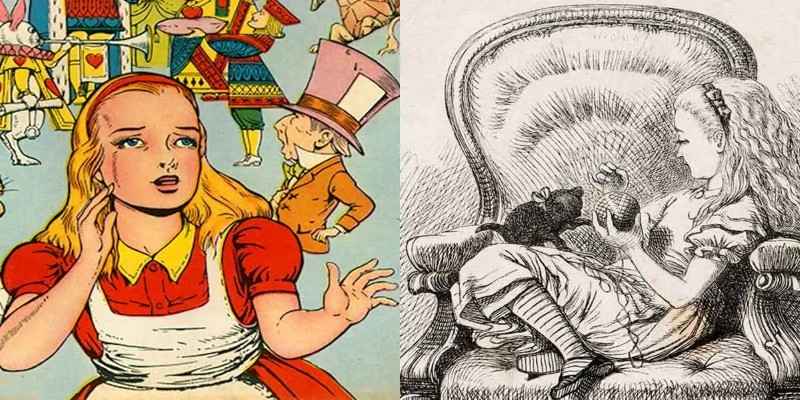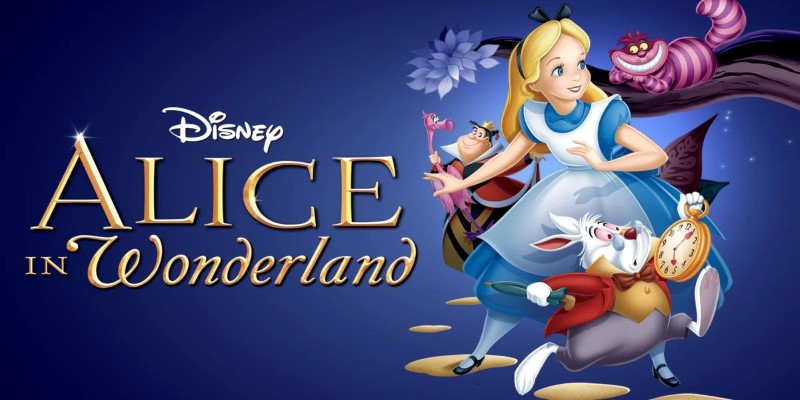Lewis Carroll's "Alice’s Adventures in Wonderland" is a timeless classic that has fascinated readers for generations. Let's delve into the enchanting world created by Carroll, exploring its publication history, writing style, plot summary, themes, characters, and the lasting impact it has had through adaptations and influence.
Embark on a journey through Wonderland, where curiosity leads to extraordinary encounters and the unexpected becomes the norm.
Lewis Carroll's timeless classic, "Alice’s Adventures in Wonderland," has a rich publication history that began in 1865. The story originated during a boat trip with three young girls, including Alice Liddell, whom Carroll entertained with a whimsical tale. Encouraged by the positive reception, Carroll eventually turned it into a manuscript. The book was first published by Macmillan & Co., introducing readers to the fantastical world that would capture hearts for generations.
Carroll's writing style in "Alice’s Adventures in Wonderland" is characterized by a delightful and imaginative tone. He weaves words together with a playful touch, creating a whimsical atmosphere that invites readers into the fantastical world of Wonderland.
The language used is a means of conveying the plot and serves as a creative playground for Carroll's linguistic ingenuity. His use of wordplay and clever language adds a layer of complexity, making the story entertaining and intellectually stimulating.
The dialogue between characters is laced with puns, riddles, and nonsensical language, contributing to the overall charm of the narrative. This playful writing style is a key element that distinguishes "Alice’s Adventures in Wonderland" and enhances the reader's engagement with the story.
"Alice’s Adventures in Wonderland" unfolds with Alice, a curious young girl, falling down a rabbit hole into a surreal and enchanting world. This marks the beginning of her extraordinary journey through Wonderland, where logic intertwines with absurdity in mesmerizing ways.
As Alice navigates this curious realm, she encounters several peculiar characters, each more eccentric than the last. The Cheshire Cat, with its disappearing grin, the Mad Hatter immersed in perpetual tea time, and the authoritarian Queen of Hearts all contribute to the peculiar tapestry of Wonderland. These characters, with their distinctive personalities, challenge Alice and the readers to question the norms of reality.
The plot takes unexpected turns, presenting Alice with unique challenges. Whether she is changing sizes, attending a mad tea party, or encountering the enigmatic Cheshire Cat, each episode in Wonderland is a blend of absurdity and logic.
Carroll skillfully creates a dreamlike quality, blurring the lines between what is real and what is imagined. This dreaminess adds depth to the narrative, inviting readers to ponder the nature of Wonderland and the meaning behind Alice's journey.

Alice is the curious and imaginative protagonist who falls into Wonderland's rabbit hole. She navigates the whimsical world, encountering peculiar characters and facing challenges that prompt self-discovery.
The White Rabbit: A hurried and anxious character who sets the plot in motion by leading Alice down the rabbit hole. Symbolizing the passage of time, the White Rabbit's antics add a sense of urgency to the story.
The Cheshire Cat: A grinning and enigmatic feline who appears and disappears at will. The Cheshire Cat serves as a guide of sorts for Alice, offering cryptic advice and embodying the nonsensical nature of Wonderland.
The Mad Hatter: An eccentric character known for hosting never-ending tea parties. The Mad Hatter's whimsical behavior and love for riddles contribute to Wonderland's surreal atmosphere.
The March Hare: The Mad Hatter's tea party companion, equally eccentric and inclined toward nonsensical conversations. Together, they provide a delightful yet peculiar dynamic in Wonderland.
The Queen of Hearts: An authoritarian and irrational ruler who shouts, "Off with their heads!" The Queen of Hearts represents a form of oppressive authority in Wonderland.
The King of Hearts: The Queen's mild-mannered and submissive counterpart, often overshadowed by her commanding presence.
The Caterpillar: A passive and wise character who smokes a hookah and dispenses cryptic advice to Alice. The Caterpillar adds an element of mystery and wisdom to Wonderland.
The Mock Turtle: A sad character with the head of a turtle and the body of a calf. The Mock Turtle shares a sentimental tale, contributing to the overall eccentricity of Wonderland.
The Gryphon: A fantastical creature with the body of a lion and the head of an eagle. The Gryphon engages with Alice, adding a touch of mythical charm to her journey.
The Duchess: A character with a fluctuating temperament, known for her chaotic household. The Duchess introduces a chaotic element to Wonderland, reflecting the whimsical and unpredictable nature of the world.
The Knave of Hearts: Accused of stealing the Queen's tarts, the Knave of Hearts becomes entwined in the courtroom drama that unfolds in Wonderland.
The enduring charm of "Alice’s Adventures in Wonderland" is evident in its widespread adaptations across diverse media. From enchanting movies to captivating stage productions, the notion of this tale consistently captivates audiences globally. Disney's 1951 animated film brought Carroll's characters to life with vibrant animation and memorable songs, solidifying its position as a timeless classic.
Beyond mere entertainment, Carroll's literary masterpiece has left an indelible mark on scholarly pursuits. Academics have delved into its profound influence on literature and philosophy, uncovering layers of meaning within its fantastical narrative.
The notion of Wonderland has transcended the book's pages, becoming synonymous with a realm of the extraordinary and the peculiar. This influence permeates popular culture and language, ensuring that Carroll's imaginative world continues to shape artistic expressions and philosophical discourse.

In conclusion, "Alice’s Adventures in Wonderland" remains a timeless masterpiece that transcends generations. Its publication history, distinct writing style, captivating plot, memorable themes, and iconic characters contribute to its enduring legacy. As adaptations continue introducing new audiences to Wonderland, Lewis Carroll's imaginative world remains as enchanting as ever.

By Eleanor/Feb 15, 2024

By Lucy Lee/Mar 16, 2024

By Eleanor/Apr 28, 2024

By Frederica/Apr 14, 2024

By Elva Flynn/Feb 19, 2025

By Aldrich Acheson/Oct 26, 2024

By Madison Evans/May 22, 2025

By Lucy Lee/Apr 28, 2024

By Susan Kelly/Apr 30, 2024

By Eleanor/Feb 11, 2025

By Georgia Vincent/Jun 17, 2025

By Eleanor/May 12, 2024